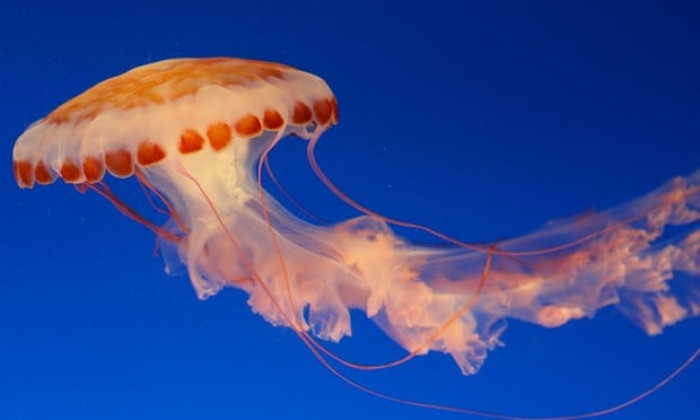I recall attending a horse-pulling contest as a child. The announcer at the event said something strange that stuck with me all these years. He said that two horses pulling a load at the same time are more effective than if the two horses pulled separately and their loads were added. That is, something about two horses working together made them greater than the sum of their parts. This study is a lot like those horses.
To begin, ocean acidification refers to the changing pH of ocean waters. As humans emit more greenhouse gases (carbon dioxide in particular) into the atmosphere, the chemistry of the oceans change. The effect is that the creatures living in the oceans are experiencing an environmental change that is separate from changing temperatures due to global warming. Scientists want to know how these changes will affect creatures, in particular because the biodiversity in the oceans is so very important to us as humans.
There has been some reporting on studies of calcifying organisms and their susceptibility to changing chemistry in the oceans. For instance, echinoderms, molluscs, corals, and crustaceans have been studied in laboratories and in situ. The studies show that acidification reduces development and survival. Acidification can alter the way these creatures make and maintain their shells.
But the authors of this new study point out that there are many other non-calcifying organisms that may also be impacted by acidification. Even for these creatures, acidification has been shown to have deleterious effects that result in reduced survival, reduced reproductivity, and reduced size.
So how does ocean acidification affect these non-calcifying creatures? One hypothesis is that the new chemistry of the ocean changes these creatures’ metabolism. Upsetting the metabolism means they are less efficient at using caloric resources within their bodies.
During this study, the authors utilized a very common zooplankton called calanoids. Calanoids make up approximately 80% of the zookplanton by mass. Consequently, they are very important. The authors also identified a predator of the calanoids - the “box jellyfish”. The fancy (scientific) word for box jellyfish is “cubozoa.” The authors wanted to know how changes to water pH affected the survival of the calanoids in the presence of a predator (the cubozoan).
After bringing both creatures together into carefully designed tanks, the authors waited and watched. In some tanks, they just changed the ocean chemistry and did not introduce the predators. In other tanks, they introduced predators but kept the ocean chemistry fixed. In a third group of tanks, they both changed chemistry and introduced the predator. And then of course, they had control tanks with no chemistry changes or predators.
What they found was really interesting. While both changes to chemistry and introduction of predators affected the populations of calanoids, the simultaneous actions of acidification and predators was greater than the individual actions. So, we see the analogy with the horses.
Why are the combined effects of these two changes more potent? The authors give clues. If, for instance, a more acidic ocean reduces the metabolic efficiency of the creatures, then they will have less energy to escape predators. In fact, these calanoid creatures are known to escape predators by making a jump or a series of jumps. Consequently, in non-altered water, only about 1% of hunting tries are successful. But, in altered water, with less energy for the calanoids, perhaps more jellyfish hunts end in a meal.
There may be other explanations – certainly future research will shed more light on this. But, already we can learn a lot. First, simply adding the effects of climate change phenomena may lead to an underestimate of impact. This underestimate may be true beyond the biological world. For instance, as storms become stronger with both winds and precipitation increasing, we may find that the damage will increase more than the separate stories of increasing wind and increasing precipitation. Similarly, increased temperature and decreased frequency of rain may cause more severe droughts than expected by the separate influences of these trends
Fascinating stuff; I can’t wait to read the next study from these authors. I also can’t wait to see if others apply this new insight to different climate change problems.
More about: #Climate-Change
















































